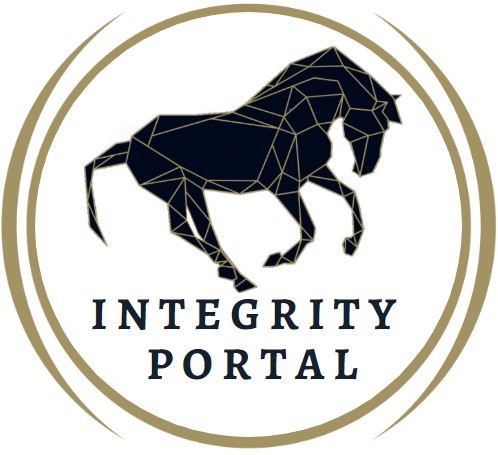Raymond Dawson (Apprentice Jockey) – Banned Substance
Naas – 16th May 2012
The Referrals Committee, John Powell (in the Chair), N.B. Wachman and Martin O’Donnell met at the Turf Club, the Curragh, Co. Kildare on Monday, 27th August 2012 to consider a report from IMIM Hospitaldelmar in Barcelona, Spain that a sample of urine taken from Raymond Dawson, Apprentice Jockey, during in-competition testing on 16th May 2012 at Naas Racecourse, Co. Kildare, was found to contain Methylenedioxymethamphetamine (MDMA) and its metabolite Methylenedioxyamphetamine (MDA). Both are banned substances under the Rules of Racing and are prohibited in-competition pursuant to the World Anti-Doping Agency Prohibited List International Standard, as adopted by the Turf Club. The ‘B’ sample which was tested at the request of Raymond Dawson confirmed the ‘A’ sample test result.
At the outset, Andrew Coonan, on behalf of Raymond Dawson, said that his client had accepted the findings and that the hearing today was purely to consider penalty.
Evidence was heard from Charles O’Brien (trainer) Master of Raymond Dawson, Raymond Dawson, Dr. Tom Barragry Pharmacologist, Paula Dawson, mother of Raymond Dawson and Paul Campbell, addiction councilor. The Committee also considered written evidence from Charles O’Brien and Edward Lynam.
In his evidence, Charles O’Brien said that Raymond Dawson had been employed by him for about three years and that he was very surprised with the positive test result. He said that Raymond Dawson had reacted well and worked very hard subsequent to being found guilty on the previous occasion.
In his evidence, Raymond Dawson told the Committee that his drink had been spiked at a party on the previous Saturday night and described the events leading up to that occurrence. He said that he was shocked when he got the phone call telling him that his sample had tested positive as he couldn’t understand how this had occurred. He said he had suffered no ill effects on the night and had slept normally after he went home from the party. He described how he had been told by a third party that she had spiked his drink when she learned that his sample was positive.
Evidence was heard that his drink had been spiked and that an ecstasy tablet had been put into it around 3.30am on Sunday morning, 13th May.
In his evidence, Dr. Tom Barragry referred to the effects of ecstasy and said that peer reviewed journals and pharmacological text books indicated that in humans MDMA produces behavioral and physiological effects which peak 1-2 hours following drug consumption which return to normal 4-6 hours later. The elimination half life of MDMA is 8-9 hours, which is to say that the circulating concentration falls by 50% every 8-9 hour period. Levels in urine are generally undetectable 72 hours after oral consumption. Majority of urinary excretion occurs with the first 24 hours approximately 2% of the drug being recovered during the 24 to 72 hour period. He said he could not explain how the concentration of MDMA and MDA found in the rider’s sample was as high as it was, bearing in mind that the rider was sampled 90 hours after his drink had been spiked. He said such a level could possibly result if a very high dosage was taken on the Saturday night but he couldn’t understand how the rider did not suffer any adverse effects of taking such a dosage if that is what occurred. He did accept that excretion times could vary depending on a number of factors.
In her evidence, Paula Dawson said that her son lived at home and that he was working extremely hard since his last offence. She described a normal working day for him which included visits to the gym and he was also attending a dietitian in the Hermitage to control his weight. She said he was dedicated to racing.
In his evidence, Paul Campbell said he had met with Raymond Dawson for about 18 hours of therapy since the positive finding. He said he did not regard Raymond as somebody who had an “addictive personality”. He said Raymond was “anti drugs” and that this was borne out by a number of negative test results on the racecourse since his last positive finding.
Having considered the evidence, the Referrals Committee noted that this was the first time that the same rider had tested positive for a banned substance on more than one occasion. They said they regarded any banned substance offence as a very serious offence. They acknowledged the admission of guilt by Raymond Dawson at an early stage and stated that this was to his credit. They said that any penalty must reflect the serious nature of the offence and ordered that his license be withdrawn for a period of 2 years, with the final 15 months of the penalty being suspended, subject to Raymond Dawson agreeing to submit to random and repeated drug tests during the first nine months of his ban at his own expense. They asked that the testing program be agreed with Dr. Adrian McGoldrick, Turf Club Senior Medical Officer, and that in the event that any sample is positive the suspended portion of the penalty will automatically apply. They also ordered that he make a contribution of €1,300 towards Turf Club costs (to include the cost of analysing the ‘B’ sample).
The case was presented by Conal Boyce, Wilkinson & Price Solicitors, Naas, Co. Kildare. Raymond Dawson, Apprentice Jockey was represented by Andrew Coonan, Coonan Cawley Solicitors, Naas, Co. Kildare.

